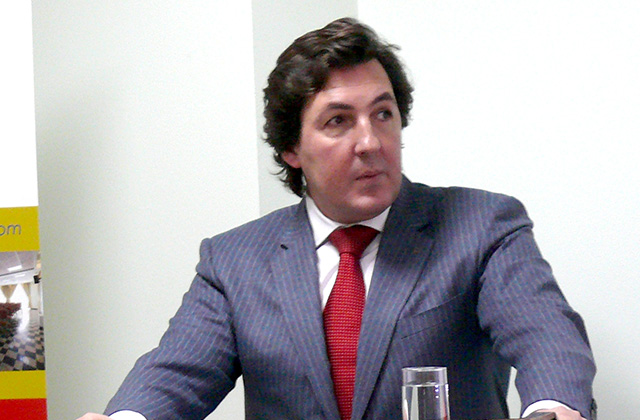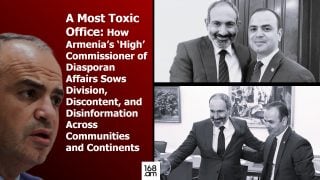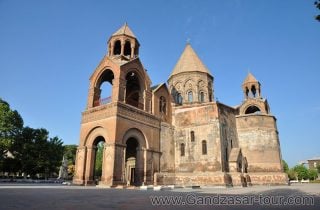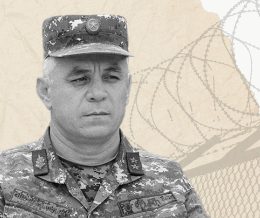
In less than a year a new framework Armenia-EU agreement should be ready. Eduardo Lorenzo Ochoa

168.am interviewed Mr. Eduardo Lorenzo Ochoa, Director of European Friends of Armenia.
– Few days ago analyst of Reuters has authored an article about European neighbourhood policy writing. “The European Union’s dream of building “a ring of friends” from the Caucasus to the Sahara has turned into a nightmare”). Some experts even think that EaP will change its face, because it has no future with its current shape. What future do you see for this project taking into consideration the situation in Ukraine, Russia-The West relations and disappointed moods in both EaP and EU countries towards this program?
-At this point it is clear that in establishing its neighbourhood policy, the European Union has failed to anticipate the reactions we have been witnessing during the last years. None of the multiple impact analyses of the Association Agreements commissioned by the EU foresaw the situation we are facing today; a civil and military strive in Ukraine, as well as Russia’s response.
However, the European Union Eastern Partnership is first a foremost a joint-initiative by the 6 EaP countries and the EU which have freely decided to work together in a number of fields. As far as I know, none of the EaP countries voiced, either in the recent Riga Summit, or in any other fora their intention to quit this program. Therefore, I understand that it still remains mutually beneficial, both for countries that signed the Association Agreement with the EU but also for those that did not.
Still, the EU is reshaping its Neighbourhood Policy, in order to improve it, make it more appealing for the partner countries, and also to provide an answer to the new challenges.
Actually all EaP countries were invited to participate in this exercise.
-What problems, to Your mind, must solve EU for saving this program and is EU ready to change anything in EaP, because as many experts insist the EU approach offered too little reward tied to too many conditions to countries, who have frozen conflicts and these conflicts are a tool of influence in the hand of Russia?
-The EU is currently revising the European Neighbourhood Policy (ENP) putting forward five priorities: Differentiation, Focus, Flexibility, Ownership and Visibility. In addition, the EU identified five areas where both sides share common interests:trade and economic development, connectivity, security, governance, migration and mobility
Obviously both the EU and the Eastern Partner (EaP) countries understood that in order to continue this program, a customised approach should be made available to all, as every EaP country is different in terms of democracy and human rights, international commitments, and socio-cultural factors. Therefore their ambitions towards the EU also differ. That also explains the different approaches towards the six EaP countries reflected in the Joint Declaration of the Riga Summit.
At first glance one could think that there are 2 groups of countries: those that have signed the association agreements (Georgia, Moldova and Ukraine) and those that did not (Armenia, Azerbaijan and Belarus). However, the diversity among the association agreements signatories is quite significant and all three cases are radically different. Likewise, the situation in the second group is also heterogeneous: while Belarus and Azerbaijan do not have any major EU ambitions and have a poor record in human rights and democracy, Armenia does adhere to the European values and principles and its EU approximation degree is on par with Ukraine’s. Armenia is a WTO member, Belarus and Azerbaijan are still working on it; Armenia concluded its negotiations with the EU on the Association Agreement while the other two did not. Both Armenia and Belarus are members of the Euroasian Economic Union, Azerbaijan is not. And finally to make things even more complicated and to the surprise of everyone, Azerbaijan has put forward a reservation to the Riga Declaration.
The EU avoids making any classification of any kind among Eastern partners which is in line with the proposal of having a differentiated approach to every country. The challenge is now to develop the appropriate tools to put into practise such approach.
Finally the revision of the EU neighbourhood policy includes as new feature that is cooperation possibilities with “neighbours of neighbours”.
-Ukrainian conflict discovered that frozen conflicts are powerful obstacle on the way of democratization in EaP region,because almost all postsoviet countries have territorial conflicts which is connected with the security of that countries which sometimes is decisive for the future. Do the EU officials think of creating appropriate conditions for EaP countries so as these countries can negotiate agreements freely without dependence from postsoviet conflicts?
-I think that EU officials are fully aware of this reality but every frozen conflict has its own settlement framework, sometimes participated directly by the EU and sometimes with the indirect support of the EU.
It is true that these situations can be a burden for negotiations. However I think that there are at least 2 examples of EaP countries that despite the added complications of suffering from a protracted conflict concluded their respective agreements with the European Union.
-The Minister of Economy Karen Chshmaritian informed journalists that Armenia is continuing its economic partnership with the EU and at the beginning of November Armenia and the EU will begin negotiations on the future agreement. How can look that agreement and to your mind what directions of cooperation can be included in this document from AA/DCFTA?
The Riga Summit added clarity to the future legal base governing EU-Armenia relations; it mapped out priorities and goals as well as contents. It also symbolises common understanding on the scope for a future comprehensive agreement between the EU and Armenia.
Concerning the areas of cooperation, the Summit gave a more precise picture: it will include mobility, aiming in the long term at a visa-free regime. Knowledge, innovation and sustainable development will also be part of the agreement, with a special focus on competitiveness of small and medium-sized enterprises. Aviation, energy efficiency and environment will also be areas of joint work for the EU and Armenia. The EU will use the European Neighbourhood Investment Facility to provide loans from European financial institutions in particular to improve interconnections and market access.
It is clear now that strengthening democracy and enabling functioning market economy, improving macroeconomic stability and the business environment will appear as fundamental features of the abovementioned new legal base.
Trade will also be included in this new framework. The EU is Armenia’s first trade partner, accounting for around 27% of Armenia’s exports. This is a fact and it is also a fundamental part of EU-Armenia relations. The new legal base will certainly reflect this reality and will word it in a way that will be fully compatible with Armenia’s international commitments. It is noteworthy that as the Eurasian Economic Union treaty leaves out some trade-related areas, such as trade facilitation, cooperation in those areas could also be foreseen.
The positive recommendation of the European Commission issued in May and several statements by President Tusk during his visit to Armenia suggest that the Council mandate for the opening of negotiations is imminent. It would be reasonable to think that in less than a year a new framework agreement should be ready, especially if it capitalises on the previous work developed in the framework of the Association Agreement (AA) negotiations.
–Armenia is already a member of the EEU. To your mind in what fields does EEU block Armenia-EU relations?
-In the field of trade, the question of standards represents a potential problem. Each free trade area, the EU and the Eurasian Economic Union, has set its own standards. If one set becomes obligatory for a country, trade with countries using the other standard may become more difficult. Goods that meet one set of standards might need supplementary certification to enter markets with another set but could be solved through negotiations. For instance, both parties could make their industrial standards compatible provided the necessary political will.
In this regard, this political part, it is less predictable, especially with the current situation in Ukraine. However, it does give hope that both EU leaders and Russia have begun to raise the topic of compatibility.
Finally, for the Eastern Partnership (EaP) to be sustainable in the long term it is becoming more and more clear that a level of mutual understanding with the Eurasian Economic Union should be found in the interest of both projects.
Arax Martirosyan























